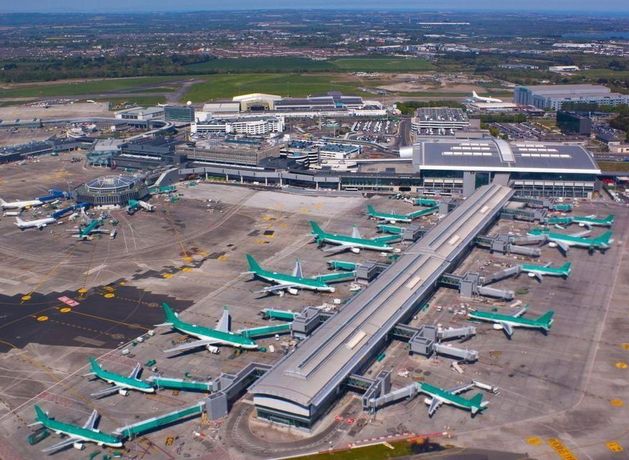Bussiness
Dublin Airport operator eyes ‘temporary waiver’ for 32m passenger cap

Dublin Airport handled 31.9 million passengers last year, just below its 32 million passenger cap. DAA insists this cap is impeding its growth.
DAA chief executive Kenny Jacobs said that US low-cost newcomer Breeze Airways was among the airlines that had been considering flying to Dublin, but has now delayed those plans due to the passenger cap.
Revenue at the DAA soared 35pc to just over €1bn last year
He said two other budget airlines had also postponed plans to fly to the capital.
Mr Jacobs said the DAA is likely to seek an increase in charges for the 2027-2030 period that would bring them to about €15 per passenger, compared with the current maximum of just under €9.
That would help it pay for a €2.5bn capital investment programme and maintain its investment credit rating.
The passenger cap at Dublin Airport was attached to the planning permission granted for Dublin Airport’s T2 terminal nearly 20 years ago.
Speaking as the DAA released its financial results for 2023, Mr Jacobs told the Irish Independent that the semi-state company is working on a proposal to raise the annual cap to 36 million as it awaits the outcome of a broader planning process.
The DAA is seeking to raise the cap to 40 million as part of a capital investment programme.
A decision on that process isn’t expected for a couple of years.
The DAA has been criticised by its two biggest customers – Aer Lingus and Ryanair – for not addressing the passenger cap before it started hampering growth at the airport.
“We are working on it and we’re considering it,” said Mr Jacobs. “We are actively engaging with Fingal County Council.”
He said if the application is submitted, it’s likely to be sometime in October.
Whether or not the application is submitted to Fingal County Council will depend on the outcome of a ruling expected from An Bord Pleanála this summer, relating to the number of night-time flights allowed at Dublin Airport, according to Mr Jacobs.
If that relevant action application is approved as is, it would remove the numerical cap on the average number of flights permitted between 11pm and 7am. That cap came into effect when Dublin Airport’s new runway opened.
It would be replaced with an annual night-time noise quota effective between 11.30pm and 6am.
Mr Jacobs said whether or not the application is submitted will also depend on whether or not a decision can be reached on it faster than its current application with An Bord Pleanála relating to the 40 million passenger cap being sought.
The DAA is seeking to raise the cap to 40 million
“We’ll do it if we think it’s going to get done and approved faster than the 40 million,” he said.
“I’d be optimistic on it. When you’re not building anything, and there’s no congestion on the roads – which was the reason for the 32 million cap – I think it’s a much simpler application.”
Revenue at the DAA, which controls Dublin Airport and Cork Airport, soared 35pc to just over €1bn last year – the first time turnover at the semi-state company has ever breached that figure.
It generated a profit after tax of €176m last year, which was 80pc higher than the €98m it recorded in 2022. The company is also paying a €31m dividend to the Exchequer.










